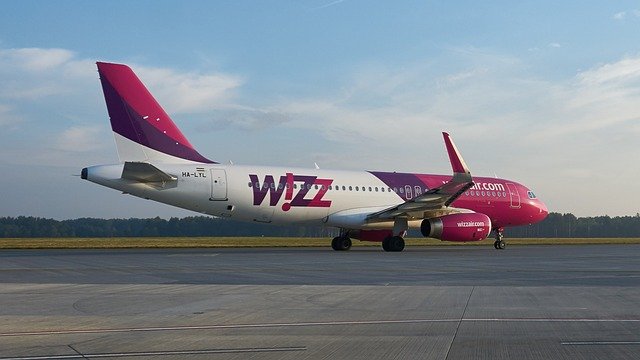Learn What It Takes to Become a Pilot: Aviation Programs That Could Help You Begin
Pursuing a pilot career starts with foundational training. Many aviation programs are available to help you learn about aircraft operation, navigation, and industry standards—skills that are essential in preparing for further flight instruction or certification.

What Airline Pilot Training Options Are Available Today?
Multiple pathways exist for aspiring airline pilots, each offering distinct advantages depending on your background and goals. Traditional four-year aviation degree programs provide comprehensive education combining theoretical knowledge with hands-on flight experience. These programs typically include courses in meteorology, aircraft systems, federal aviation regulations, and aerodynamics.
Alternative routes include accelerated flight training academies that focus intensively on practical flying skills and certification requirements. Military aviation experience represents another proven pathway, with many commercial pilots transitioning from armed forces backgrounds. Community colleges also offer aviation programs that can serve as stepping stones to advanced training.
Professional pilot programs often partner with regional airlines to create direct pathways from training to employment. These structured programs usually include guaranteed interview opportunities and mentorship from experienced aviation professionals.
How Do Different Pilot Training Programs Compare?
Pilot training programs vary significantly in duration, cost, and approach to instruction. University-based programs typically span four years and integrate flight training with broader aviation education including business, management, and technical subjects. These comprehensive programs often include internship opportunities and extensive simulator training.
Part 141 flight schools operate under strict Federal Aviation Administration oversight and follow standardized curricula. These schools offer structured training environments with consistent progress tracking and detailed recordkeeping. Part 61 schools provide more flexible scheduling and personalized instruction approaches.
Airline transport pilot license programs focus specifically on commercial aviation requirements. These intensive courses prepare students for airline cockpit environments through advanced simulator training and crew resource management instruction. Many programs utilize modern aircraft fleets and state-of-the-art training facilities.
Online ground school components complement practical flight instruction, allowing students to complete theoretical coursework at their own pace while maximizing actual flight time efficiency.
What Aviation Career Paths Can Pilots Pursue?
Aviation careers extend far beyond commercial airline positions, offering diverse opportunities across multiple industries. Regional airline pilots typically begin their commercial careers flying smaller aircraft on shorter routes, building experience and flight hours required for major airline positions.
Corporate aviation pilots operate private aircraft for businesses and high-net-worth individuals, often enjoying varied destinations and flexible schedules. Cargo pilots transport freight worldwide, playing crucial roles in global commerce and logistics networks.
Flight instruction represents both an entry-level position and a specialized career path. Many pilots begin as certified flight instructors to build required flight hours while sharing their aviation knowledge with new students.
Additional career options include aerial survey work, emergency medical services, law enforcement aviation, and agricultural flying. Each specialization requires specific training and certifications but offers unique professional experiences.
Government positions include opportunities with agencies like the Federal Aviation Administration, National Transportation Safety Board, and various military branches for civilian pilots.
Understanding the financial investment required for pilot training helps in planning your aviation education effectively. Training costs vary significantly based on program type, location, and aircraft utilized during instruction.
| Program Type | Provider Examples | Cost Estimation |
|---|---|---|
| University Aviation Degree | Embry-Riddle, Purdue University | $180,000 - $250,000 |
| Part 141 Flight School | ATP Flight School, CAE | $90,000 - $150,000 |
| Part 61 Training | Local flight schools | $80,000 - $120,000 |
| Military Training | U.S. Air Force, Navy | Service commitment required |
Prices, rates, or cost estimates mentioned in this article are based on the latest available information but may change over time. Independent research is advised before making financial decisions.
What Prerequisites Must Aspiring Pilots Meet?
Pilot training programs require specific prerequisites that vary depending on the certification level sought. Private pilot licenses require students to be at least 17 years old, hold valid medical certificates, and demonstrate English proficiency. Commercial pilot certification increases the minimum age requirement to 18 years.
Airline transport pilot licenses, required for airline captains, mandate candidates be at least 23 years old with 1,500 total flight hours. However, graduates from approved university aviation programs may qualify with reduced hour requirements under specific circumstances.
Medical certification requirements depend on intended career paths. First-class medical certificates are mandatory for airline pilots, while private pilots may qualify with less stringent third-class medicals. Vision, hearing, and cardiovascular health standards apply to all categories.
Educational backgrounds vary by program, though many airlines prefer candidates with bachelor’s degrees. Strong mathematics and science foundations prove beneficial throughout aviation training and careers.
How Long Does Professional Pilot Training Take?
Training timelines depend heavily on chosen pathways and individual dedication levels. University aviation programs typically require four years for degree completion and commercial pilot certification. Accelerated programs can achieve similar results in 12-24 months through intensive daily instruction.
Building required flight hours for airline positions represents the longest phase for most pilots. Regional airline minimums often start around 1,500 hours, while major airlines may prefer candidates with 3,000+ hours experience.
Weather conditions, aircraft availability, and personal scheduling significantly impact training progress. Full-time students generally complete training faster than those balancing other commitments.
Career advancement from regional to major airlines typically takes 5-10 years, depending on industry conditions and individual performance records.
The path to becoming a professional pilot requires significant commitment, financial investment, and dedication to continuous learning. While various training programs offer different approaches to aviation education, success ultimately depends on choosing the program that best matches your goals, learning style, and financial situation. Whether pursuing university aviation degrees or intensive flight school programs, thorough research and realistic planning form the foundation for successful aviation careers.




